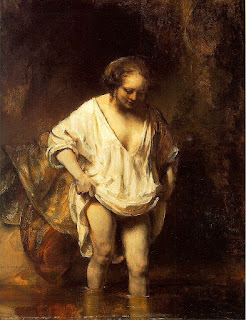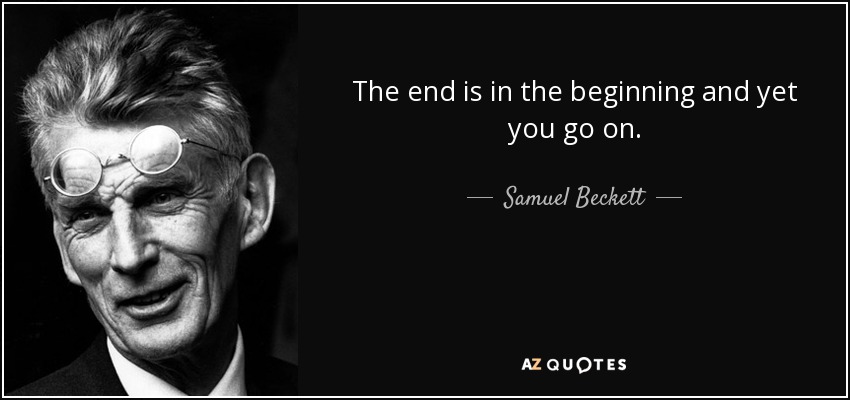On Beauty and Being Wrong (Part III)
“Ah-a Hopper,” said Kiki, pleased at the coincidence. It was a print of Road in Maine, one of the series of poorly reproduced lithographs of famous American paintings meant to signal the classiness of the store ...”Someone's just walked down there,” she murmured, her finger travelling softly along the flat, paintless surface. “Actually, I think it was me. I was moseying along counting posts. With no idea where I was going. No family. No responsibilities. Wouldn't that be fine! “Let's go to Amherst,” said Carlene Kipps urgently.(“On Beauty” (end of section 2, “The Anatomy Lesson,” page 268)
The bond between the two ladies, Carlene and Belsey, has by now narrowed in their sparse encounters, and , consolidated through an inarticulated reality of common understanding and unison. This intrinisic reality (equally attributed to this Hopper's landscape) surpasses the ideological confrontation of their respective partners for the sake of beauty, embodied in their joint admiration for the “The Maitresse Erzulie” painting which Carlene shrines in her house; an undermining of academic verbal pyrotechnics and the prospect of embarking themselves on this Amherst adventure with “no responsibilities”. However, the likelihood of this occurrence is curtailed by the uneventful apperance of Carlene's son, Michael, and husband, Mr Kipps. Amherst, Emily Dickinson's hometown and burial place, constitutes one of the many strewn references to Emily Dickinson in this novel.
“I Died for Beauty,” written by Emily Dickinson acquires utmost relevance at this crux between section 2 and section 3:
I died for beauty, but was
scarce
Adjusted in the tomb,
When one who died for truth was
lain
In an adjoining room.
He questioned softly why I failed?
"For beauty," I replied.
"And I for truth -
the two are one;
We brethren are," he said.
And so, as
kinsmen met a-night,
We talked between the rooms,
Until the
moss had reached our lips,
And covered up our names.
“On Beauty and Being wrong” opens up with Carlene's death, burial, wake and legacy to Kiki, the painting by Hector Hyppolite, “The Maitresse Erzulie.” The Kippses reluctance to grant Kiki the painting and its concealment set the “deus ex machina” of the narrative in motion. Levi will set the balance right by returning the painting to its origins through his own political activist crusade with the Haitians.
“On Beauty and Being Wrong” also lingers on Howard's struggle with his own insecurities, his middle-aged crisis, his being wrong and wanting to be right, his infidelities, his re-reading of Rembrandt, his re-reading of love, his dissension with academia, his misinterpretations and misencounters. He travels back through the stranded road of time to encounter his father, the butcher, who wanted him to write about beautiful things that may have enlightened his mother, the woman they both loved and the only thing in common. He storms out to discover that time has congealed misunderstanding.
Carl, the street poet, the lyricist, ascends the podium of academia. He is allotted a nook in the library archive, in the Department of Black studies, but the system stifles him. He banishes from the narrative after a misalignment of stars. Victoria´s overpowering beauty snowballs disaster: the unfortunate matches-- Howard and Victoria, Carl and Victoria, Victoria and Zora, Victoria and Jerome-- ensue chaos. Monty is equally unmasked and exposed in a faux pas of not communing with his preaching.
The novel ends with Howard's contemplation of this painting:
“Hendrickje Bathing, 1654,’ croaked Howard and said no more... The woman’s fleshiness filled the wall. He looked out into the audience once more and saw Kiki only. He smiled at her. She smiled. She looked away, but she smiled. Howard looked back at the woman on the wall, Rembrandt’s love, Hendrickje. Though her hands were imprecise blurs, paint heaped on paint and roiled with the brush, the rest of her skin had been expertly rendered in all its variety – chalky whites and lively pinks, the underlying blue of her veins and the ever present human hint of yellow, intimation of what is to come.”
Go ahead and post your comments on the gnarling of this section!





